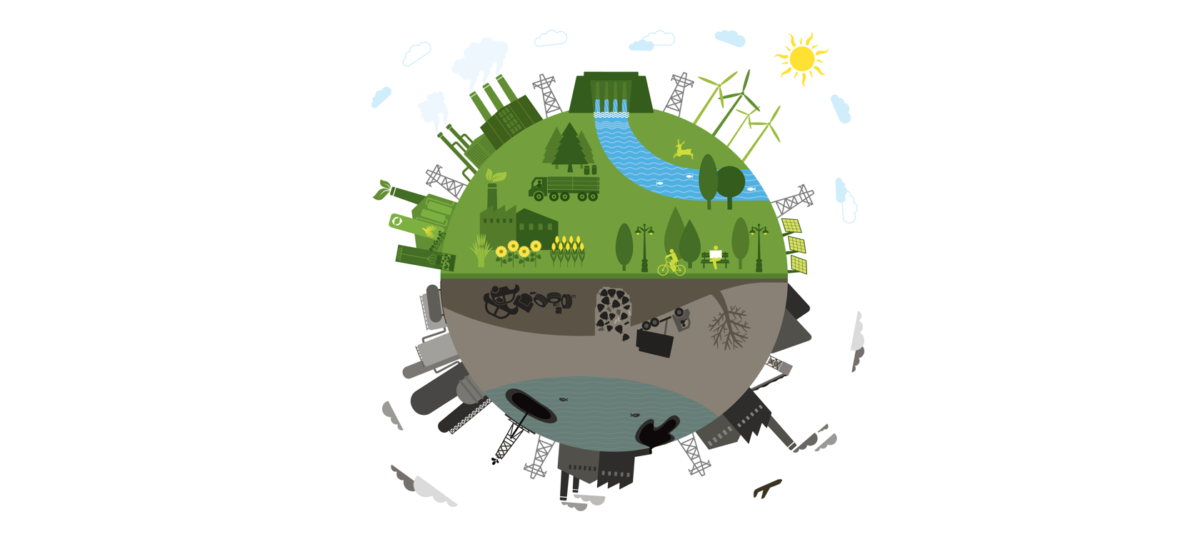Humanities nature of pushing boundaries can economically be explained by the invisible hand of Adam Smith. The pushing culture resulted in short-term tendencies, which damaged our habitat. Especially energy generated from fossil fuels like gas and coal. This increasing stretch on our big blue marble comes with a price. Not for the planet as many shall be thinking, but for living organisms like humans. Kind of ironic that the outraging exploitation of our planet will not harm it, but will ultimately strike us. And kind of funny that the root for our problem, economic rational shall give us a solution.
Headlines aren’t covering it, but at this moment a silent revolution is taking place. It is driven by technology and progressive businessmen. These people realize, that besides the greenhouse effect, fossil fuels are limited. To maintain their wealth, they started to invest in alternative energy. This generated an acceleration in sustainable energy. Because of these technological developments and investment activities sustainable energy is cheaper than energy generated by fossil fuels. This tipping point is reached without governmental financial aid. Therefore, it is the economic rational that gives the ultimate solution. This incentive will speed up the transition to sustainable energy. This scenario is not a futuristic one, but a reality in countries such as Brazil, Australia and United Arab Emirates. Other countries like Spain, Germany and Morocco will reach their tipping point in a few years. How come that the Netherlands is not following these developments and increased the use of coal to produce energy? Dutch government policy about sustainability is powerless, missing a clear vision and the drive to innovate.
Looking at the five forces model of Porter you can envision that the treat of sustainable energy as a substitute of fossil generated energy in the coming decade is high. The quality of the two different sources of energy is equal, this will not change the threat. But knowing that the substitute is (becoming) cheaper and that switching costs are low may have enormous consequences for current energy suppliers. These substitute threats may be reduced by initial high capital investments and the need for economies of scale. Therefore, there will be no abundance of new entrants. But a lot of capital is flowing in the sustainable energy sector. A record of 286 billion dollars for investments and new capital can create economies of scale and hence new entrants can form a threat. You can think of large pension funds who grasp the opportunities and have a policy in sustainable development. Will current leading energy companies make the transition earlier because of these developments? Will society profit from this in terms of wealth but also in welfare? Which technologies will be leading?
References:
6 procent van onze stroom kwam vorig jaar uit wind. (2016, November 28). Retrieved September 28, 2016, from http://nos.nl/artikel/2134785-6-procent-van-onze-stroom-kwam-vorig-jaar-uit-wind.html
Armstrong, R., & Perez-Arriaga, I. (2014, November 10). The Utility of the Future. Retrieved September 26, 2016, from http://energy.mit.edu/news/the-utility-of-the-future/
De doorbraak van duurzaam. (2016, August 25). Retrieved September 28, 2016, from http://www.vpro.nl/programmas/tegenlicht/speel~VPWON_1261670~de-doorbraak-van-duurzaam-vpro-tegenlicht~.html
Luttikhuis, P. (2016, September 22). ‘Duurzame welvaart is onze taak’ Retrieved September 28, 2016, from https://www.nrc.nl/nieuws/2016/09/22/duurzame-welvaart-is-onze-taak-4406112-a1522876
McCrone, A., Moslener, U., D’Estais, F., Usher, E., & Grüning, C. (2016, March). Global Trends in Renewable Energy Investment 2016. Retrieved September 28, 2016, from http://fs-unep-centre.org/publications/global-trends-renewable-energy-investment-2016
Porter, M. E., & Millar, V. E. (1985). How information gives you competitive advantage.

